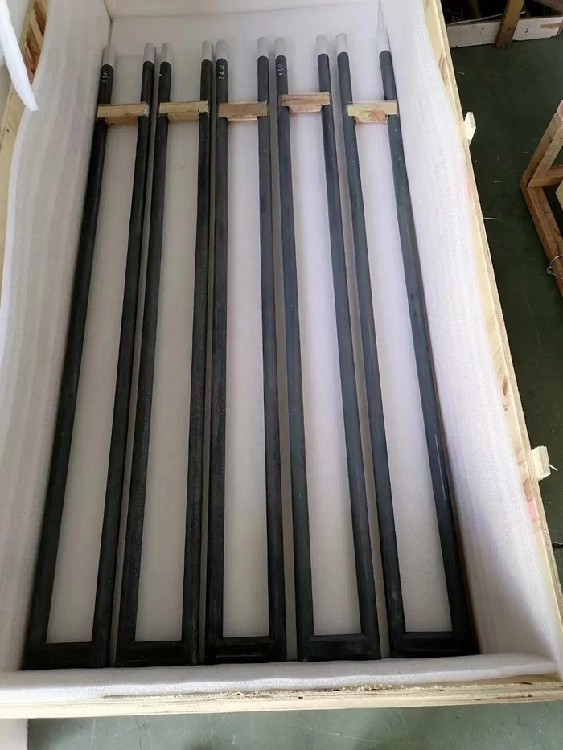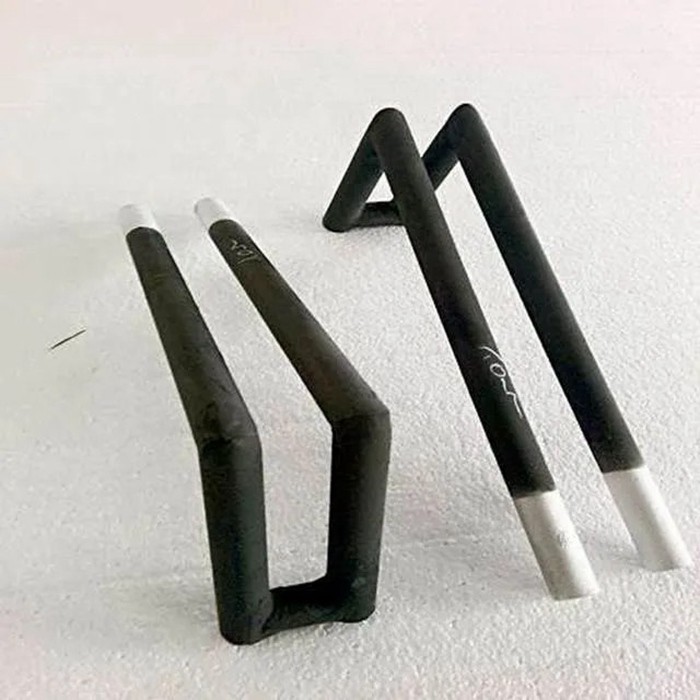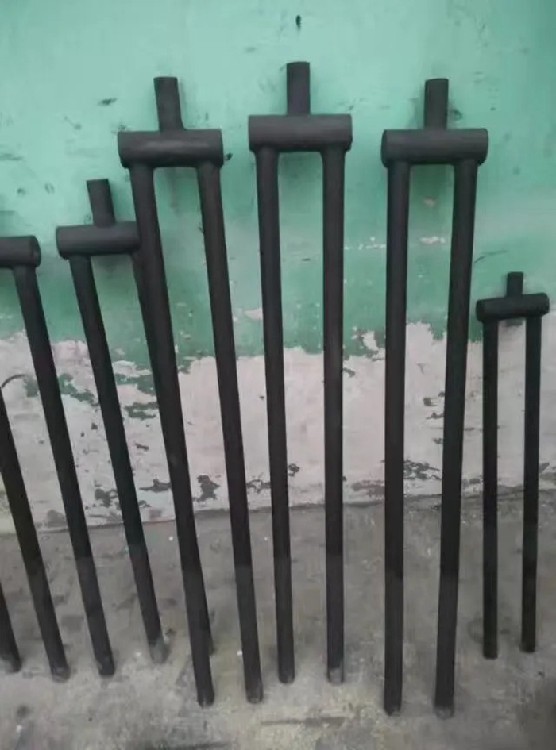Detailed Introduction of Alumina Ceramic Heating Rods
Product description
In the intricate landscape of industrial heating, where demands for pinpoint accuracy, relentless durability, and unwavering safety are paramount, a specific component consistently proves its mettle: the alumina ceramic heating rod. This is not merely a heater; it is a sophisticated thermal engine, engineered for scenarios where conventional elements are a compromise. Moving beyond basic functionality, these rods represent a fusion of material science and electrical engineering, designed to deliver performance where it matters most. This detailed exploration sheds light on the operational principles, distinct benefits, and diverse implementations of alumina ceramic heating rods, providing a clear understanding of their critical role in modern technology and industry.

Unpacking the Technology: The Anatomy of a High-Performance Heater
An alumina ceramic heating rod is fundamentally an integrated thermal system. Its core construction utilizes high-purity aluminum oxide (Al₂O₃), a specialized technical ceramic, which is molded and sintered to form a dense, rigid body. Within this ceramic body, a resistance alloy, typically configured as a coil, is securely embedded. This integration creates a unified, monolithic structure where the ceramic acts as both the heating surface and a protective insulator. The resulting component is a self-contained powerhouse capable of generating and transferring intense heat with remarkable efficiency and control, setting a new standard for what a heating element can achieve.
Defining Characteristics: The Pillars of Superior Performance
Several intrinsic properties of the alumina ceramic material form the foundation of the rod's exceptional capabilities. The foremost characteristic is its exceptional dielectric strength. This property ensures the rod remains an effective electrical insulator even when subjected to extreme temperatures, a critical safety feature that prevents short circuits and electrical hazards in demanding environments. Complementing this is an extraordinary thermal endurance. These rods are designed to operate continuously at soaring temperatures, often reaching up to 1500°C and beyond in high-grade versions, without succumbing to thermal degradation or deformation.
Furthermore, the material boasts a compelling combination of high mechanical strength and significant hardness, rivaling that of many metals. This structural integrity allows the rod to maintain its form and function under substantial physical load and constant vibration. Finally, its renowned chemical inertness cannot be overstated. The alumina ceramic is largely impervious to oxidation and highly resistant to corrosion from a wide spectrum of acids, alkalis, and molten materials, ensuring operational integrity in chemically aggressive processes.
Operational Benefits: Translating Features into Tangible Value
The practical advantages of employing these heating rods directly impact efficiency, cost, and product quality. One of the most valued benefits is the dramatic extension of service life. Their resistance to oxidation, chemical attack, and thermal cycling stress means they far outlast metallic counterparts, leading to reduced maintenance frequency, lower spare part inventories, and enhanced operational uptime.
Another significant advantage is their rapid thermal response. The excellent thermal conductivity of alumina ceramic facilitates a swift transfer of heat from the embedded coil to the target surface. This results in faster cycle times, reduced energy consumption, and improved process control. The material's nature also ensures a highly uniform temperature profile across the entire heating surface, eliminating problematic cold spots that can lead to inconsistent product quality or process inefficiencies. This precision is indispensable in applications like analytical instrumentation or high-grade material synthesis.
A Spectrum of Applications: Where Precision Heat is Non-Negotiable
The unique attribute set of alumina ceramic heating rods makes them the preferred solution across a broad industrial and technological horizon. In the realm of advanced manufacturing, they are pivotal in semiconductor fabrication, providing the clean, controlled heat needed for diffusion, epitaxy, and annealing processes. The plastics industry leverages them for precise temperature management in hot runner systems, injection molding nozzles, and extrusion dies.
Their chemical resilience makes them ideal for immersion heating in electroplating baths, anodizing lines, and chemical reactors where corrosive media are present. Within the scientific and medical fields, they are found in laboratory furnaces, sample preparation equipment, and sterilization devices, where temperature accuracy and purity are critical. Emerging technologies, such as high-temperature 3D printers, also utilize these rods for their ability to reliably melt advanced engineering polymers and composites.



Addressing Common Inquiries: A Practical Q&A
1. How does the watt density of an alumina ceramic rod compare to other heaters?
These rods are capable of supporting very high watt densities due to the excellent thermal conductivity and high-temperature stability of the alumina ceramic. This allows them to deliver more power from a compact form factor compared to many insulated metal heaters, making them ideal for applications requiring intense, localized heat.
2. Are there any specific considerations for controlling the temperature of these rods?
For optimal performance and longevity, precise temperature control is recommended. Using a PID (Proportional-Integral-Derivative) controller in conjunction with a thermocouple or RTD sensor is standard practice. This setup minimizes temperature overshoot and ensures stability, protecting both the heating rod and the process from thermal fluctuations.
3. Can the shape of these heating rods be customized for specific equipment?
Yes, one of the strengths of the ceramic manufacturing process is its flexibility. While cylindrical rods are most common, manufacturers can produce a variety of shapes, including rectangular bars, tubular forms, or even more complex geometries with integrated mounting features to fit unique machinery layouts.
4. What causes a ceramic heating rod to fail prematurely, and how can it be prevented?
The most common causes of premature failure are mechanical damage, such as impact or improper mounting stress, and thermal shock from extremely rapid cooling. Ensuring secure, correct installation and avoiding exposing a hot rod to sudden drafts of cold air or liquid can significantly extend its operational life.
5. For a high-temperature furnace application, would an alumina ceramic rod be preferable to a silicon carbide one?
The choice depends on the specific requirements. Alumina ceramic rods excel in applications requiring high mechanical strength, excellent electrical insulation, and superior resistance to thermal shock and metal vapor contamination. Silicon carbide heaters can operate at even higher temperatures but are generally more brittle and can degrade in certain atmospheric conditions. Alumina is often chosen for its robust all-around performance and durability.
In essence, the alumina ceramic heating rod is a testament to engineered excellence in thermal management. It is a solution that prioritizes long-term reliability, precision, and safety, delivering consistent value in the most challenging environments. By specifying this technology, engineers and operators invest in a component that not only meets but exceeds the rigorous demands of modern industrial heating.
Recommended products

